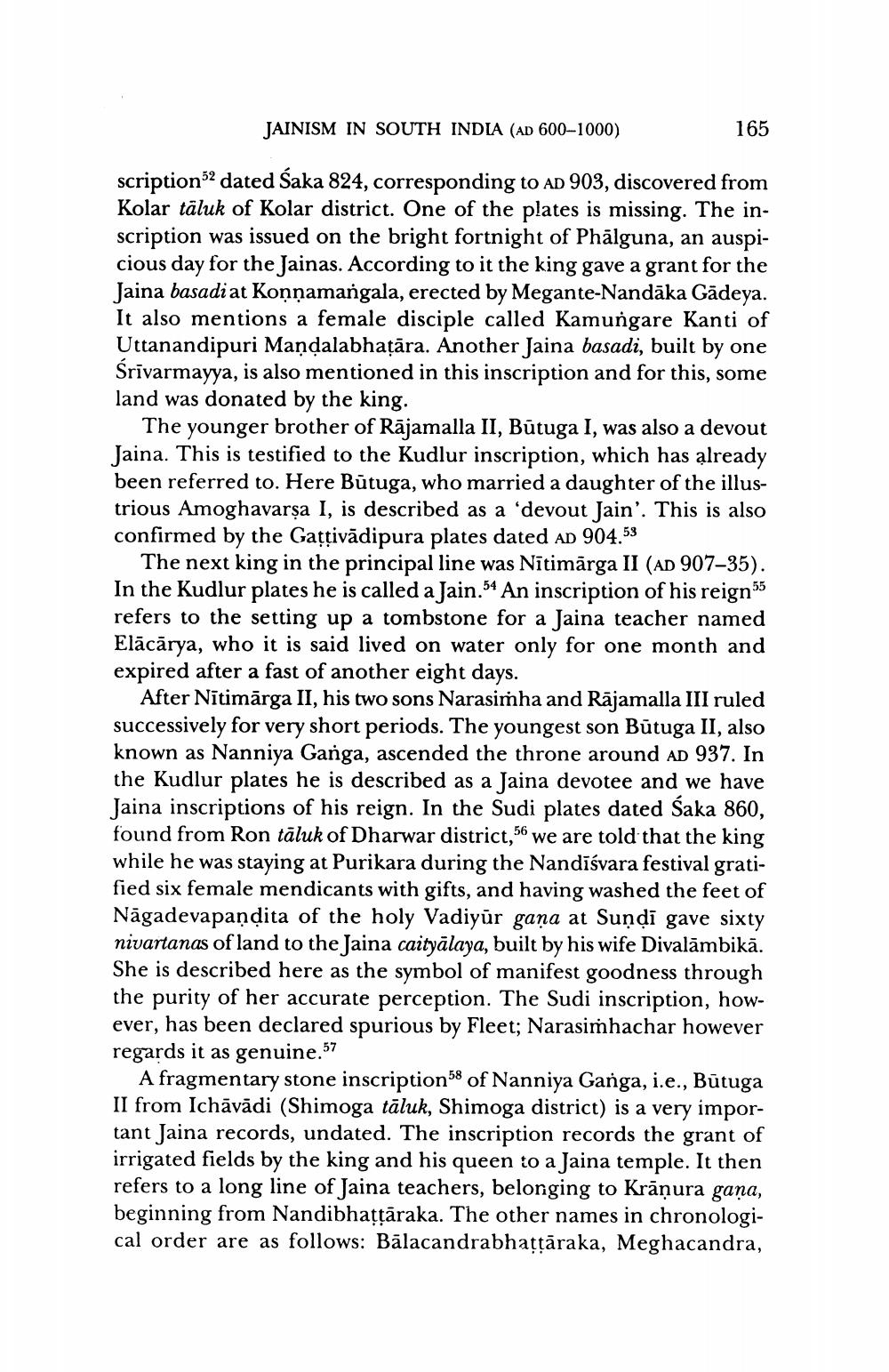________________
JAINISM IN SOUTH INDIA (AD 600-1000)
165
scription"2 dated saka 824, corresponding to AD 903, discovered from Kolar tāluk of Kolar district. One of the plates is missing. The inscription was issued on the bright fortnight of Phālguna, an auspicious day for the Jainas. According to it the king gave a grant for the Jaina basadi at Konnamangala, erected by Megante-Nandāka Gädeya. It also mentions a female disciple called Kamungare Kanti of Uttanandipuri Mandalabhațāra. Another Jaina basadi, built by one Srivarmayya, is also mentioned in this inscription and for this, some land was donated by the king
The younger brother of Rājamalla II, Būtuga I, was also a devout Jaina. This is testified to the Kudlur inscription, which has already been referred to. Here Būtuga, who married a daughter of the illustrious Amoghavarsa I, is described as a 'devout Jain'. This is also confirmed by the Gațțivādipura plates dated ad 904.53
The next king in the principal line was Nītimārga II (AD 907–35). In the Kudlur plates he is called a Jain. 54 An inscription of his reign35 refers to the setting up a tombstone for a Jaina teacher named Elācārya, who it is said lived on water only for one month and expired after a fast of another eight days.
After Nītimārga II, his two sons Narasimha and Rājamalla III ruled successively for very short periods. The youngest son Būtuga II, also known as Nanniya Ganga, ascended the throne around AD 937. In the Kudlur plates he is described as a Jaina devotee and we have Jaina inscriptions of his reign. In the Sudi plates dated Saka 860, found from Ron tāluk of Dharwar district,56 we are told that the king while he was staying at Purikara during the Nandiśvara festival gratified six female mendicants with gifts, and having washed the feet of Nāgadevapandita of the holy Vadiyūr gana at Sundi gave sixty nivartanas of land to the Jaina caityālaya, built by his wife Divalāmbikā. She is described here as the symbol of manifest goodness through the purity of her accurate perception. The Sudi inscription, however, has been declared spurious by Fleet; Narasimhachar however regards it as genuine.57
A fragmentary stone inscription58 of Nanniya Ganga, i.e., Būtuga II from Ichāvādi (Shimoga tāluk, Shimoga district) is a very important Jaina records, undated. The inscription records the grant of irrigated fields by the king and his queen to a Jaina temple. It then refers to a long line of Jaina teachers, belonging to Krāņura gana, beginning from Nandibhattāraka. The other names in chronologi cal order are as follows: Bālacandrabhattāraka, Meghacandra,




